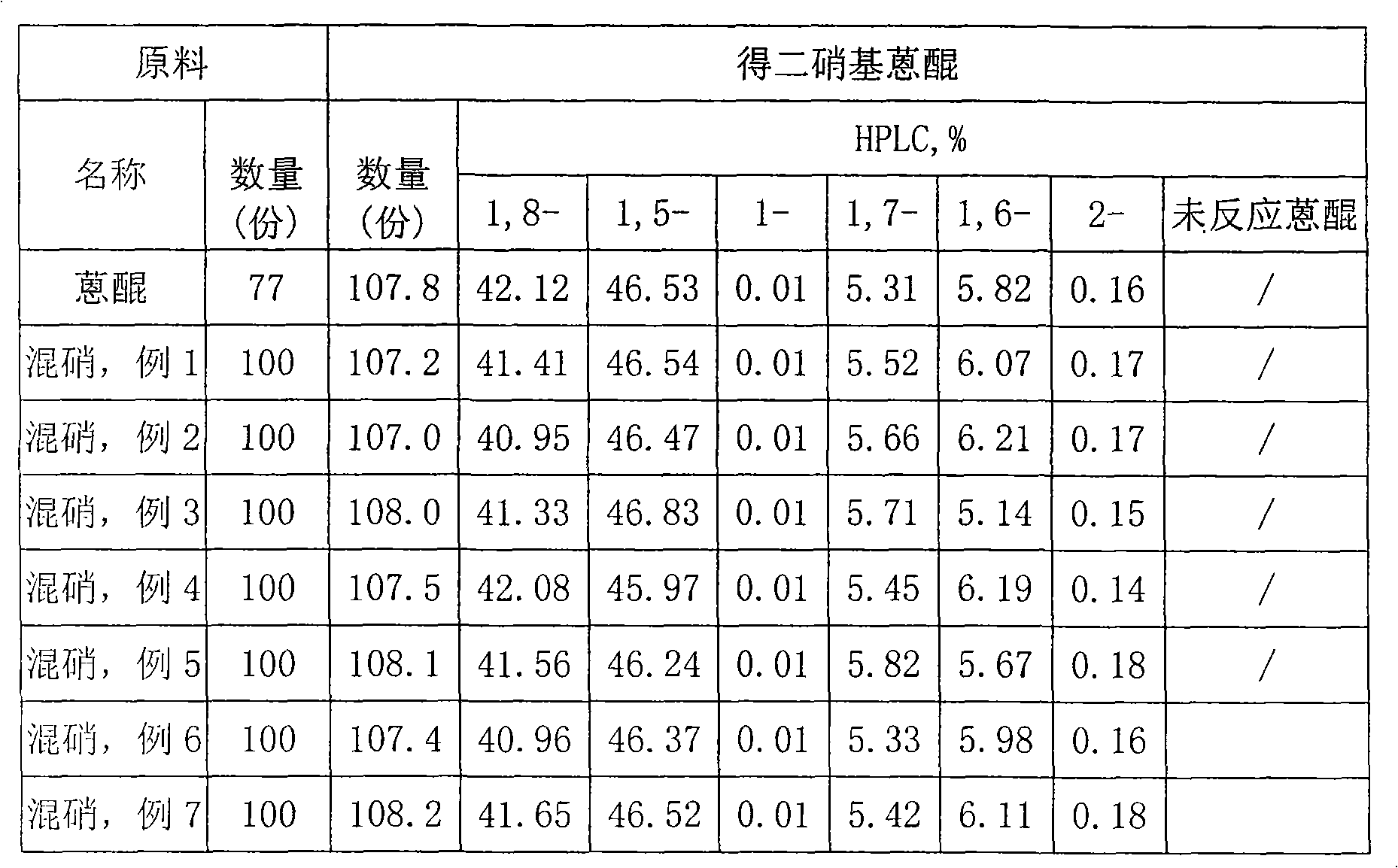Method for treating waste residue for producing 1-aminoanthraquinone into raw material for producing 1,5(1, 8)-dinitroanthraquinone
A technology of dinitroanthraquinone and aminoanthraquinone is applied in the field of resource utilization of "waste residue", which can solve the problems of unstable composition, small dosage, unstable color and light, etc., and achieve stable product quality, large economic benefits, and market The effect of large capacity
- Summary
- Abstract
- Description
- Claims
- Application Information
AI Technical Summary
Problems solved by technology
Method used
Image
Examples
Embodiment 1
[0016] Add 100 parts of dry powdery "waste residue" to 400 parts of 93% sulfuric acid, heat to 60-65°C and stir for 1 hour, cool to room temperature, filter, and squeeze out the liquid in the filter cake as much as possible. The filter cake was beaten and filtered in 300 parts of cold water, and then washed with cold water until the pH of the filtrate was greater than 4. The filter cake was dried to obtain 62 parts of mixed nitric acid, which consisted of: 1,8-dinitroanthraquinone 5.64%, 1 , 5-dinitroanthraquinone 6.27%, 1-nitroanthraquinone 62.52%, anthraquinone 18.84%, the rest are 1,6- / 1,7-dinitroanthraquinone, 2-nitroanthraquinone and others Anthraquinone isomers.
Embodiment 2
[0018] Replace 400 parts of 93% sulfuric acid in embodiment 1 with 380 parts of 98% sulfuric acid, other is with embodiment 1, mixed nitrate yield and composition and embodiment 1 are close.
Embodiment 3
[0020] Add 100 parts of dry powdery "waste residue" to 500 parts of 80% nitric acid, heat up to 50°C and stir for 2 hours, cool to room temperature, filter, and squeeze out the liquid in the filter cake as much as possible. The filter cake is beaten in 300 parts of water, filtered, and the filter cake is washed with cold water until the pH of the filtrate is greater than 4, and the filter cake is dried to obtain 56 parts of mixed nitric acid. The composition is: 1.91% of 1,8-dinitroanthraquinone, 1, 5-Dinitroanthraquinone 8.34%, 1-nitroanthraquinone 56.16%, anthraquinone 24.03%, the rest are 1,6- / 1,7-dinitroanthraquinone, 2-nitroanthraquinone and other anthraquinones quinone isomers.
PUM
 Login to View More
Login to View More Abstract
Description
Claims
Application Information
 Login to View More
Login to View More - R&D
- Intellectual Property
- Life Sciences
- Materials
- Tech Scout
- Unparalleled Data Quality
- Higher Quality Content
- 60% Fewer Hallucinations
Browse by: Latest US Patents, China's latest patents, Technical Efficacy Thesaurus, Application Domain, Technology Topic, Popular Technical Reports.
© 2025 PatSnap. All rights reserved.Legal|Privacy policy|Modern Slavery Act Transparency Statement|Sitemap|About US| Contact US: help@patsnap.com

